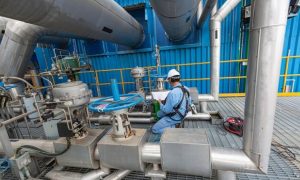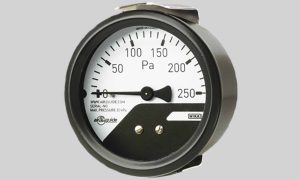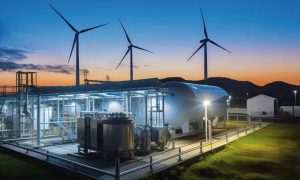In the pursuit of sustainability, the design aspects of HVAC systems play a crucial role. Each element contributes to energy efficiency and occupant comfort, from insulation thickness to sensor integration. The article explores the importance of design considerations in building a sustainable future.
In a world where sustainability has become increasingly critical, the quest for environmentally-friendly solutions has extended to every aspect of our lives, including HVAC systems. Integrating nature and harnessing its resources has become a key focus as we strive to create a more sustainable future. A sustainable HVAC solution goes beyond individual components, instead embracing a holistic approach considering the intricate connections between various elements. It requires careful system integration that minimises energy consumption, reduces carbon emissions, and ultimately lowers our carbon footprint. This journey involves designing biodegradable products and manufacturing processes prioritising carbon emission reduction.
Smart design
The term “smart design” has become widely used in various industries, focusing on incorporating elements of sustainability. However, at its core, smart design ensures customer comfort and promotes a healthy living environment. This includes maintaining optimal temperature, humidity, and lighting conditions to enhance comfort and well-being. The aim is to prioritise natural lighting over artificial sources, minimising energy usage. Moreover, smart design encompasses energy conservation, water treatment, and overall sustainability measures. Mr. Bhavesh Mehta, IGBC, Mumbai Chapter, adds, “Ultimately, the goal is to create spaces that support healthy living and are environmentally conscious. It’s important to note that smart design is not solely about temperature settings but rather about creating a comfortable atmosphere, with 27 degrees considered a convenient temperature for activities like offices or educational institutions.”
Mr Bhavesh noted that data centres, which traditionally operated at 18 degrees centigrade, have now demonstrated the feasibility of functioning at 27 degrees centigrade without compromising the comfort of individuals. This shift in temperature settings exemplifies a smart design approach that prioritises efficiency and sustainability while still ensuring optimal working conditions for people.
Approximately 20 percent of the cooling load in a building is influenced by the architectural design and its various elements. This includes optimising heat gain from facades, considering building orientation and incorporating shading devices. The building envelope and passive measures collectively contribute to this portion of the cooling load. Mr. Ashish Rakheja, Managing Partner, AEON Consultants, says, “By closely collaborating with architects and utilising tools like district winds, it becomes possible to analyse the building’s performance during the design phase. This enables informed decision-making on how to plan the building effectively. Once the passive design features are appropriately implemented, it becomes feasible to install high-quality technical equipment such as insulation, machines with an excellent coefficient of performance (COP), efficient chillers, high-efficiency pumps, variable frequency drives, and IE5 motors. These measures further enhance the building’s energy efficiency and sustainability.”
Green buildings
Green buildings are generally more cost-effective. However, the issue arises when the building is not initially designed with green principles. In such cases, incorporating energy-saving technologies as an afterthought can increase the building’s cost. Conversely, if the building design is corrected and optimised from the start and then supplemented with these costly electromechanical measures, the capital cost of the building will likely decrease or be on par with that of a conventional building. This has been the observed experience. Moreover, implementing good insulation on top of these measures contributes to operational cost savings.
Sustainable HVAC efficiency solutions
Proper maintenance of HVAC systems is essential, regardless of the initial design and parameters. For instance, even if high-efficiency machines are installed, neglecting regular maintenance, such as cleaning air handling unit (AHUs) filters, can lead to issues. In a home setting, if a machine is not periodically cleaned, the filter can become clogged, restricting airflow and causing a drop in performance. Therefore, it is crucial to religiously follow the recommended maintenance guidelines provided by the original equipment manufacturer. Mr Bhavesh Mehta reminiscences that there is a strict emphasis on cleaning filters at Reliance, which is a simple yet crucial task. The process involves removing the filter and washing it thoroughly. This is the first and foremost step in maintaining HVAC systems.
Implementing air curtains is important to ensure proper air circulation in your office or store. Air curtains act as artificial barriers between non-air-conditioned and air-conditioned areas, reducing air migration. Additionally, with the increasing use of glass facades in modern architecture, addressing the challenges they pose to air conditioning systems is crucial. Glass, especially thin or unsuitable types, can lead to higher thermal heat transfer through conduction, convection, and radiation, increasing operating costs. To mitigate this, it is recommended to use the right type of solar film or select glass with low emissivity (low-E). These aspects, namely air curtain implementation, filter maintenance, solar film application, and air migration reduction, are important for optimal HVAC performance.
Enabling sensors into HVAC
It is crucial to have a monitoring system that provides insights into the performance of the HVAC system. This enables analysis of whether upgrades or replacements of specific components are necessary.
To optimise energy conservation without compromising comfort, it is essential to provide sensors and the controller. Let’s consider the example of a ceiling-suspended ductable unit that cools a specific area of around 3000-4000 square feet. The placement of sensors plays a crucial role in achieving the desired outcomes. The primary aim is to minimise power consumption while ensuring optimal comfort for employees or occupants. Various sensors can be employed to achieve this goal. For instance, one sensor can measure the ambient temperature, while another can be placed at the return air filter. Additional sensors can be positioned before and after the coil and in the supply and room areas. Around six to seven sensors can be utilised to monitor and optimise the HVAC system’s performance effectively.
The primary objective is optimising power usage while ensuring the occupants’ desired comfort level. To achieve this, sensors are installed in the room to monitor the temperature. The sensor will signal the compressor when the temperature reaches the designated 24 degrees Celsius. In the case of a variable frequency inverter compressor, it operates by adjusting its speed and frequency. Upon receiving the signal from the sensor, the inverter system or controller will modify the compressor’s speed accordingly. By reducing the compressor’s speed, the desired temperature of 24 degrees Celsius can be maintained without unnecessary energy consumption from running the compressor at maximum speed. The sensor aims to optimise power usage while guaranteeing the comfort of the individuals in the space.
The same principle also applies to chilled water air handling units (AHUs). In this case, the sensor is typically placed near the filter inside the room and operates with the chilled water flow to control water flow through the AHU. This variable chilled water flow controls the air temperature as it passes through the evaporator coil. Similarly, the sensor adjusts the refrigerant flow into the evaporator coil for refrigerant-based systems. The main purpose of these sensors is to optimise the HVAC system’s operation and reduce operating costs without compromising customer comfort. Whether it’s a college, university, hospital, commercial building, or shopping mall, customer comfort remains a top priority that should always be maintained.
Effectiveness of thermal insulation
Regarding thermal insulation for cold applications, there are several factors to consider in the design process. These factors include thermal conductivity, relative humidity, and whether the application is indoor or outdoor. Therefore, when working on a new construction project, it is essential to consider these parameters during the design phase.
When selecting insulation for a system, various factors like the thickness of the insulation, the covering system used, and the ease of installation are accounted for. It’s important to consider multiple aspects because various insulation options are available for applications such as ducting and piping. The ideal insulation choice should have optimal thermal conductivity, comply with fire safety standards, and be easy to install. Once the appropriate insulation is selected, calculations can be provided to the client, allowing them to choose the specific insulation type to be used.
Selecting the right thickness for insulation is crucial for achieving effective thermal insulation. It depends on several factors, including the location and intended use. When determining the appropriate insulation thickness, evaluating whether the location is near a coast or inland is essential. Moreover, specific requirements related to the building’s purpose must be considered. For example, a hotel might require a different insulation thickness than a hospital, which may also need insulation with antimicrobial properties. The environment and climate also play a significant role in determining the optimal thickness. Insulation requirements can vary between hot and humid regions and hot and dry regions. Higher HVAC efficiency can be achieved by tailoring insulation solutions to these factors.
Insulation applicator
The role of the applicator is crucial in achieving optimal performance alongside the quality of the product itself. Working with certified applicators is highly important, as installation companies often provide training and certification to contractors. It is recommended to collaborate with certified applicators to ensure proper installation. In some cases, uncertified applicators may be chosen due to commercial considerations, which can negatively impact the insulation’s performance when applied to ducting or piping. Poor workmanship can lead to challenges beyond energy savings, such as water condensation and subsequent damage to interior surfaces.
Additionally, hygiene issues may arise due to water dripping. Therefore, it is advisable to select certified applicators, as the potential consequences of poor workmanship outweigh the associated costs. Contacting the manufacturers can help find certified applicators for the task.
To create a sustainable future, it is essential to reassess and redefine various design aspects. Insulation is a crucial element which is vital in preventing energy losses. The selection and installation of insulation should be carefully tailored to meet the specific climate and city requirements. There is no universal solution, as applying a thick insulation layer to everything is ineffective. The key focus should be strategically evaluating and installing insulation to minimise energy losses. However, it is equally important to consider the end user’s perspective. They are the ones who will ultimately inhabit and operate the building, so their comfort and needs must take precedence. Shifting the mindset from simply providing cooling to achieving thermal comfort can contribute to a sustainable future and align with national leaders’ carbon emission standards and decarbonisation goals.
As we strive towards a sustainable future, reevaluating and redefining design aspects becomes imperative. Insulation emerges as a crucial element in minimising energy losses and should be thoughtfully chosen and installed, considering specific climate and city requirements. Moving away from a one-size-fits-all mentality is vital, recognising that excessive insulation thickness does not necessarily equate to optimal performance. Instead, the focus should be strategically preventing energy losses through careful insulation selection and installation practices. However, we must not forget the end user—the individuals who inherit and operate these buildings. Their comfort and well-being should remain a top priority as we aim to balance sustainability and human needs. By shifting our perspective from simply cooling spaces to achieving thermal comfort, we can contribute to a sustainable future and align with carbon emission reduction goals set by our leaders. We can forge a path towards a greener and more sustainable world through careful consideration, collaboration, and innovative design strategies.
Mr. Hiten Patel, IGBC – AP, Business Head – Technical & Sales, Shree Jashraj Enterprises.
“Insulation plays a vital role in preventing energy losses and should be carefully selected and installed based on the specific climate and city requirements.”
Mr. Bhavesh Mehta, IGBC, Mumbai Chapter.
“It’s important to note that smart design is not solely about temperature settings but rather about creating a comfortable atmosphere, with 27 degrees being considered a convenient temperature for activities like offices or educational institutions.”
Mr. Ashish Rakheja, Managing Partner, AEON Consultants.
“Approximately 20 percent of the cooling load in a building is influenced by the architectural design and its various elements. This includes optimising heat gain from facades, considering building orientation, and incorporating shading devices.”
Cookie Consent
We use cookies to personalize your experience. By continuing to visit this website you agree to our Terms & Conditions, Privacy Policy and Cookie Policy.















